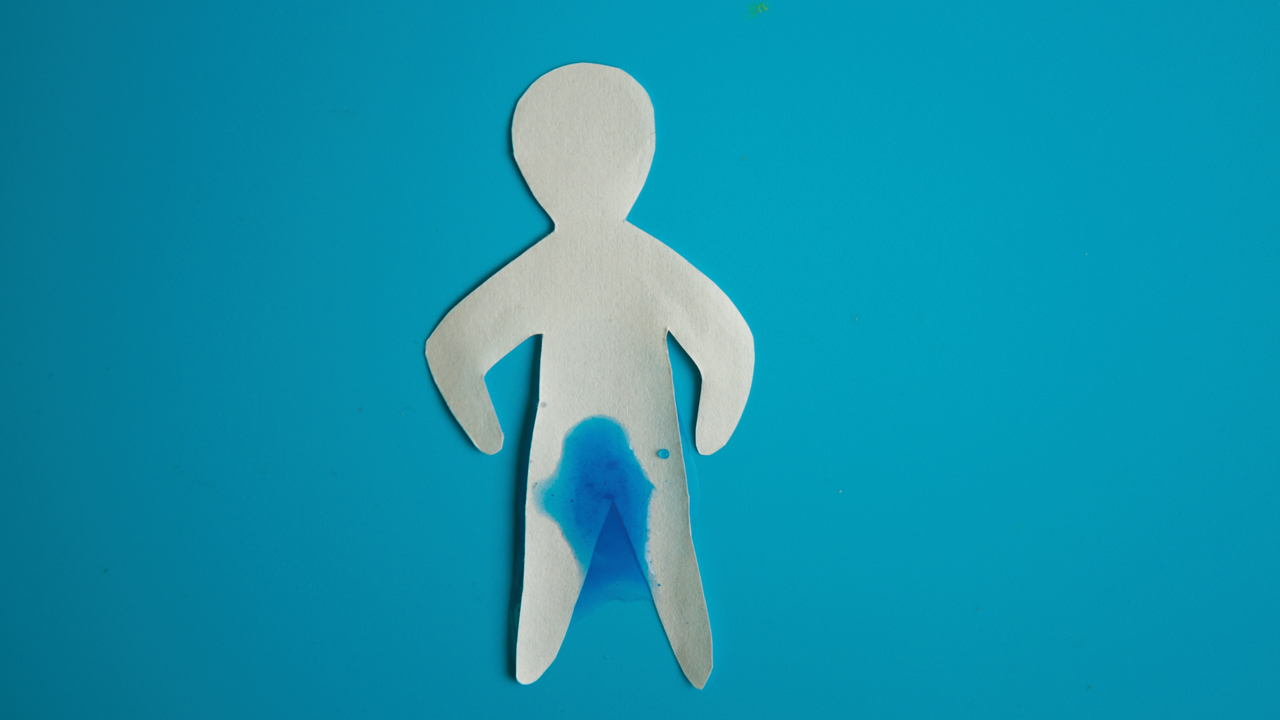In Conditions
Follow this topic
Bookmark
Record learning outcomes
Bladder leakage – or urinary incontinence – is more common than people realise, with research from incontinence products manufacturer Tena claiming one in three women over 35 in the UK have experienced bladder weakness.
The condition additionally affects one in 10 men over the age of 60, estimates Kimberly Clark, manufacturer of the Depend range.
People can experience various types of incontinence, including stress incontinence (leakage when they cough, sneeze or exercise), urgency (where they have to rush to the toilet), frequency (visiting the toilet more than eight times a day), or stress and urgency incontinence at the same time, known as ‘mixed symptoms’.
Short-term incontinence is also common and can occur for various reasons such as infection, constipation, or taking medication that has side effects. More often than not, however, incontinence is viewed as a natural sign of ageing.
Despite being so common, incontinence is still a source of distress, embarrassment and inconvenience and can be very difficult to discuss. Pharmacy teams should be able to spot and engage those suffering and provide them with the right advice, support and self-help strategies.
So, what are the main types of incontinence, their symptoms, differences, and the self care, treatment and product advice available that can help?
Types of incontinence
Sometimes called irritable bladder, overactive bladder syndrome (OAB) is the need to pass water much more often than the ‘normal’ eight times a day, generally with little warning, and usually with nocturia (the need to pass urine during the night). It can occur at any age but is most common in elderly people.
OAB often has no obvious cause – other than age – although it may be associated with Parkinson’s disease, spinal cord injury, diabetic neuropathy, multiple sclerosis, dementia or stroke.
As pharmacy teams are often the first to identify customers with OAB, people disclosing symptoms should be encouraged to speak to their GP to ensure there’s no other cause, with charity, the Bladder & Bowel Community, stressing that OAB can “usually be cured and at worst can be managed”.
There are various treatment options available. Discussing lifestyle changes with customers is the first place to start, especially since many people trying to manage their own OAB often limit their fluid intake. This attempt is usually unsuccessful as not drinking enough can “cause urine to become very concentrated [which] can irritate your bladder and make incontinence worse”, according to charity, Incontinence UK. Customers should aim to drink around six to eight glasses (1.5-2 litres) of water a day, which will also help avoid the risk of developing a urine infection.
Urine leaking when coughing, sneezing, laughing, lifting and so on is called stress urinary incontinence (SUI), and is usually due to weakness of the bladder or pelvic floor muscles, especially after childbirth or during the menopause.
Pharmacy teams can reassure women that it is not unusual to experience stress incontinence after the birth of a baby – or even while they are pregnant – due to the weight of the baby and the effect of relaxing hormones on the muscles.
Doing pelvic floor exercises can help strengthen muscles, and midwives will be able to explain the correct technique, or customers can ask their GP to refer them to a specialist physiotherapist.
People experiencing ‘urgency’ feel a sudden need to go to the toilet, and those with ‘urge incontinence’ may leak if they do not get there in time. Most cases of urgency and urge incontinence are caused by an overactive bladder or, in the short term, by a urinary tract infection (UTI).
People with diseases that affect the nerves that are linked to the bladder – such as multiple sclerosis (MS) and Parkinson’s disease – can be prone to urgency and urge incontinence, and in men, urge incontinence may also be due to prostate problems as, if the prostate becomes enlarged, it can place pressure on the bladder and the urethra.
Treatment for urgency or urge incontinence depends on the severity of symptoms and starts with conservative treatments such as bladder retraining. This involves the person keeping track of their bladder habits and gradually increasing the length of time between bladder emptying by resisting feelings of urgency/frequency.
Medicinal interventions include the oral medication Betmiga, which acts as a muscle relaxant and can be used if conservative methods haven’t worked, or antispasmodic medications which can help prevent spasms of the bladder muscle to reduce urgency and frequency.
People experiencing overflow incontinence – referred to as chronic urinary retention – are unable to completely empty their bladder, it then fills up again too quickly and urine may leak out.
Overflow incontinence may be caused by a urethral obstruction (prostate enlargement, faecal impaction) which makes it more difficult for urine to pass. It’s far more prevalent amongst men than it is with women, as an enlarged prostate is the most common trigger.
The condition can also be caused by an inactive bladder muscle as a result of damage to the nerves that control the bladder because of diabetes, MS, injury or side effects of some medications.
Pharmacy teams should encourage customers experiencing urinary retention to see their GP as soon as possible, as the condition comes with a risk of damage to the kidneys due to the pressure of urine building up in the bladder and urinary tract. Treatment for urinary retention depends on the cause, but for men with an enlarged prostate gland, surgery to remove the part compressing the urethra may relieve symptoms.
In neurogenic bladder disorder, the nerves carrying messages between the bladder, spinal cord and brain don’t work normally, resulting in urine leakage.
The most common symptoms of neurogenic bladder include:
- UTIs
- Kidney stones
- Urinary incontinence
- Frequency and urgency
- Dribbling
- A loss of feeling that the bladder is full.
There is a variety of possible causes of neurogenic bladder such as diabetes, accidents resulting in injury to the brain or spinal cord, as well as birth defects affecting the spinal cord, and brain or spinal cord tumours. Because symptoms of neurogenic bladder may look like other bladder conditions, it’s always worth referring customers to their GP for further advice and diagnosis.
Depending on the diagnosis, treatment for neurogenic bladder can include catheterisation, medication – including antibiotics to reduce infection, where appropriate – surgery to remove blockages, and even Botox injections into the bladder muscle.
Post-micturition dribble (PMD) or ‘after dribble’, is the name given to the problem when men experience an involuntary loss of urine immediately after they have finished passing urine.
PMD can affect men of all ages and is due to a weakness of the muscles of the pelvic floor which surround the urethra following surgery for an enlarged prostate, straining to empty the bowels especially when constipated, a constant cough, being overweight, neurological damage, or persistent heavy lifting.
The Bladder & Bowel Community recommends two ways of dealing with PMD, which include, pelvic floor exercises and to push the last few drops of urine from the urethra with the fingers before the final shake.
Functional incontinence – also known as ‘disability associated urinary incontinence’ – occurs when a person’s bladder and/or bowel is working normally but they are unable to access the toilet due to a physical or cognitive condition.
People with physical barriers to continence can be helped with toileting and mobility aids, easily removed clothing and even good lighting. Those with cognitive barriers such as dementia can benefit with signs and pictures to show where the toilet is, as well as carers and family members being alert to any cues the person may give when they want to use the toilet.
Obesity and bladder weakness
Some risk factors for incontinence can’t be avoided, but obesity is often connected to bladder weakness and is something pharmacy teams can encourage and support customers to do something about.
Having a high body mass index (BMI) is one of the most commonly seen causes of incontinence, according to continence product supplier Allanda, who estimates that each five unit increase in BMI is associated with an incontinence prevalence risk of up to 50 per cent.
This is usually due to the fact that excess weight in the abdominal area puts pressure on the bladder which can weaken or damage pelvic floor and urethral structures, making bladder leaks more likely. People with type 2 diabetes who are carrying extra weight can, similarly, also experience urinary incontinence.
Pharmacy teams are therefore in the ideal position to advise overweight or obese customers that they can reduce their chances of bladder leaks if they can maintain a healthy weight.
What about the menopause?
Most people are familiar with common symptoms of menopause such as hot flushes and mood swings, but bladder weakness is less discussed, despite data from Tena suggesting up to 50 per cent of post-menopausal women experience urine leakage every now and then.
Bladder weakness usually starts in the perimenopause stage as levels of oestrogen levels start to fall, and pelvic floor muscles weaken, commonly leading to stress urinary incontinence and overactive bladder. Once again, pelvic floor exercises can help with muscle control, and customers can also talk to their GP about medication or further referrals for other treatment options.
Pharmacy teams should also encourage women to talk to their GPs about the benefits and risks of hormone replacement therapy (HRT), in order to work out if it will relieve their menopausal symptoms, and access it if they want to. In the meantime, staff can recommend a wide range of discreet continence products, which are more appropriate than the sanitary pads some women choose to use. Although continence products can cost more, they’re much more effective and comfortable.
With pharmacy teams at the forefront of professional healthcare advice, they are ideally placed to provide discreet and appropriate information, support and break down the taboos surrounding this sensitive issue.


